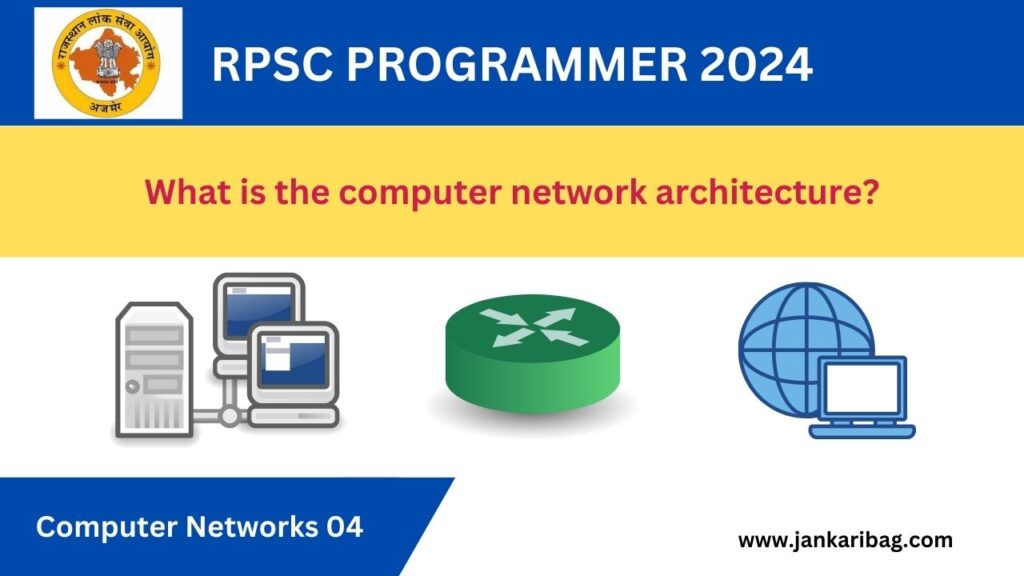In today’s world, where everyone is connected through digital technology, computer network architecture is like the essential structure that allows information to flow smoothly, keeps everyone connected strongly, and manages resources effectively.
Whether you’re streaming a video, sending an email, or accessing cloud services, understanding the basics of network architecture unveils the intricate web of technology that supports our daily interactions in the digital world.
What is Computer Network Architecture? (The Backbone of Modern Connectivity)
Computer network architecture is basically about how a computer network is planned and organized. It includes how devices and cables are physically set up, and also the rules that decide how data travels between them.
It’s like a blueprint that shows how computers, servers, routers, switches, and other devices in a network talk to each other to send information across different places, whether nearby or far away.
Components of Network Architecture
Network Topology:
- Physical Topology: Describes the physical layout of devices and cables in the network, such as star, bus, ring, mesh, and hybrid configurations.
- Logical Topology: Defines the paths data takes within the network, often dictated by protocols like Ethernet, IP, and TCP/IP.
Network Protocols:
- Establish rules and conventions for communication between devices. Examples include TCP/IP (used for data transmission on the internet), UDP (suitable for streaming and real-time applications), HTTP (facilitating web browsing), and DNS (translating domain names into IP addresses).
Networking Hardware and Software:
- Hardware: Includes routers, switches, hubs, access points, and cables that physically connect devices and form the network infrastructure.
- Software: Encompasses operating systems and network management tools that control and monitor network operations, ensuring smooth functionality and security.
Network Services:
- Facilitate various functionalities such as file sharing, email services, remote access, printing capabilities, and security measures like VPNs (Virtual Private Networks) and firewalls.
Network Security:
- Critical for safeguarding data integrity, confidentiality, and availability within the network. This involves encryption, authentication mechanisms, firewalls, intrusion detection systems (IDS), and access control policies.
Network Performance and Management:
- Focuses on optimizing network performance through bandwidth management, Quality of Service (QoS) policies, traffic shaping, and load balancing. Network management includes tasks like configuration management, fault detection, performance monitoring, and troubleshooting.
Key Aspects of Network Architecture
- Scalability: Networks should accommodate growth in devices, users, and traffic without compromising performance.
- Reliability: Ensuring high availability and minimal downtime through redundancy, fault tolerance mechanisms, and disaster recovery plans.
- Security: Implementing robust measures to protect against unauthorized access, data breaches, malware attacks, and other cyber threats.
- Efficiency: Optimizing network resources to maximize data transmission speeds, minimize latency, and effectively utilize available bandwidth.
Types of Network Architectures
- Client-Server Architecture: Centralized model where clients (end-user devices) request services or resources from central servers.
- Peer-to-Peer (P2P) Architecture: Decentralized model where devices share resources and communicate directly without relying on a central server.
- Cloud-Based Architecture: Utilizes cloud computing resources and services to provide scalable, flexible, and on-demand network solutions.
Conclusion
Computer network architecture is crucial for how we use technology today. It forms the backbone of how devices connect and communicate with each other. Understanding its parts, rules, and different types helps businesses and people build strong, safe, and effective ways to share information.
As technology grows, network architecture becomes even more important. It lets us stay connected smoothly and helps push society’s shift to more digital ways of doing things.







